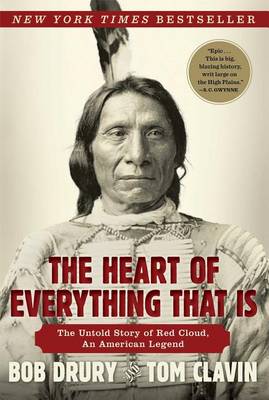Reviewed by gmcgregor on
Drury and Clavin strive to present a straightforward, unvarnished look at their subjects and push back against the idea that before protracted contact with whites, Native Americans lived as idyllic pacifists. Tribes had allies and enemies and some of them were very comfortable inflicting brutal violence against the latter. Red Cloud was brought up among his mother's people, the Oglala Lakota, one of the more aggressive branches of the greater Lakota nation, and was groomed for leadership by his mother's uncle. As he grew up, his people were pushed farther and farther from their traditional territory and he fought against enemy tribes in his youth, gaining renown, before turning his attention to the threats posed by the continually promise-breaking whites.
After a series of skirmishes, things came to a head at Fort Phil Kearney. It was a perfect storm: angry at yet another incursion into their land, the Lakota were able to ally with other tribes. The leadership at the fort was both arrogant and foolhardy. Red Cloud was a smarter tactician than his opponents. And the United States was forced to retreat, to abandon its forts. But it lasted less than a decade. The book covers the immediate aftermath of the battle, but only touches on the long run: Red Cloud, taking a trip to Washington, DC, realized the scale of the threat to his people and the ultimate hopelessness of continuing the fight, and led those that would follow him onto the reservation.
Pretty much any book about Native American history is inevitably compared to Dee Brown's Bury My Heart At Wounded Knee simply because of that book's prominence. And I'd say this book is an excellent companion. It doesn't have, and honestly doesn't try for, the scope of Bury of My Heart, which covers more tribes over a longer time period. Instead, it takes a little known episode (I'd never heard of the Fetterman Fight) and explains it, placing its people and events into a larger context. And the book succeeds at this task, developing not only Red Cloud and to a lesser extent, his young protege Crazy Horse, as compelling and sympathetic characters, but also presenting the life of the Army fort, populated not just with soldiers but with families. No one is a cardboard cutout villain.
That being said, this book does occasionally get a little dry. I know some people are fascinated with military history and can happily read about tactics and battles for hours, but I am not one of those people. I find it deeply boring to read about attack techniques, and so I did experience waning interest when I think I was supposed to be the most engaged, during the climactic battle itself. I also found myself wanting more of the aftermath, more of Red Cloud's long life after this particular point. Overall, though, it's an interesting look at a part of history that's not well-understood by most potential readers, and I'd definitely recommend it as a way of broadening one's knowledge base about the formation of the United States as we know it today.
Reading updates
- Started reading
- 21 May, 2018: Finished reading
- 21 May, 2018: Reviewed
